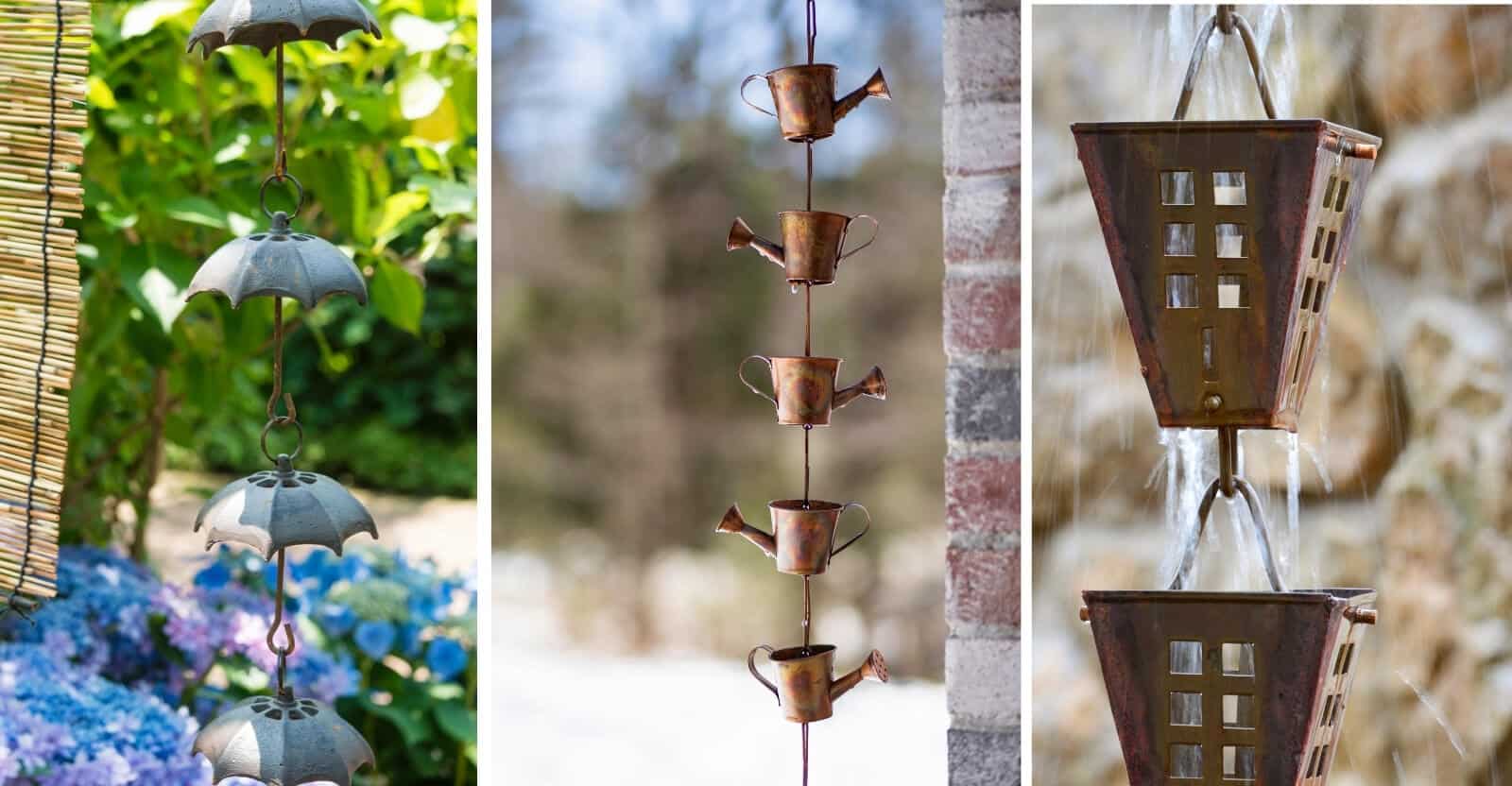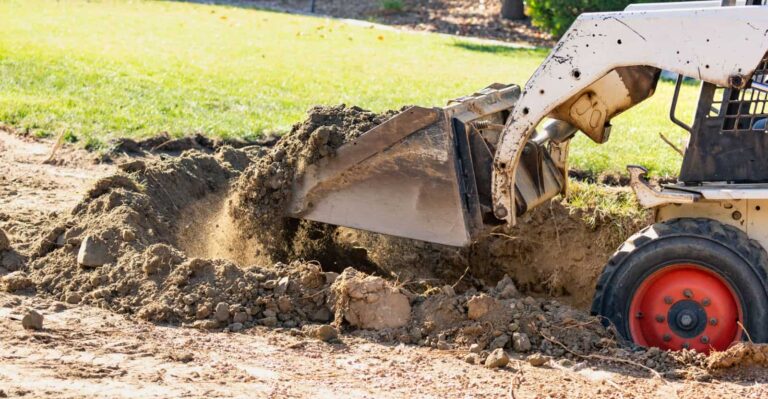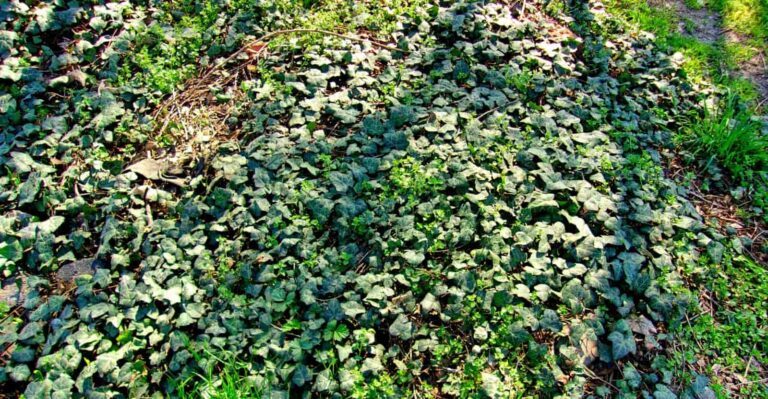Amazon has put together some great Home Gift Deals – save money and get your shopping done at the comfort of your home! Click here to see deals on Amazon
Did you know that rain chains or “rain gardens” have existed for centuries? They’re an easy and appealing way to add beauty and elegance to any home while being a great alternative for gutter downspouts to drain the water from the roof.
Rain chains contain no moving parts and are easy to install. Installing them yourself would be a snap. They’re made from copper, brass, and aluminum and are distinguished by their unique design and textured surface. These are a popular fixture in contemporary design but are suitable for any home.
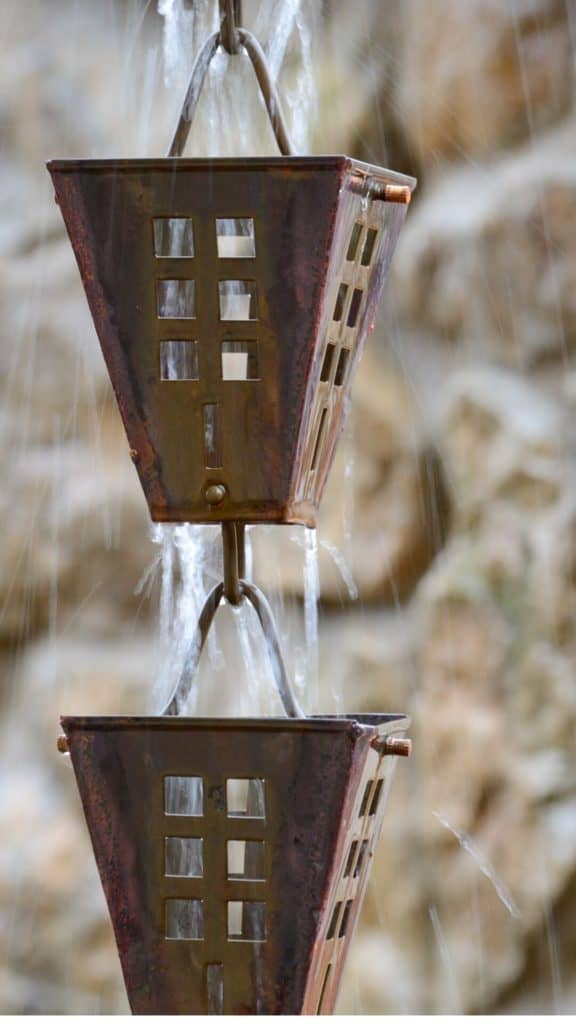
What is a rain chain?
Rain chains are a decorative way to collect rainwater from the roof of a house. They’re also called chain mills and are often hung from gutters to prevent water from dripping on the ground and carrying away dirt.
Rain chains come in many different styles, but they all have one thing in common—they’re made of chain links that hang and catch the rainwater before it hits the ground.
The invention of rain chain credit goes to the Japanese, who have utilized the metal roofing to gather rainwater, transporting it downward with chains and storing it for household use. The Japanese call it “Kusari-doi,” where they hang these metal chains to ornate their temples instead of a plain gutter downspout.
Why should you use a rain chain?
Rain chains are an exciting way to decorate your home. They’re also an excellent way to attract birds and make your garden look more beautiful with a decorative chain. When you install a rain chain, you don’t need to worry about the water that falls on the roof of your house anymore because it will just flow down through the chain and into the ground or ceramic pot.
The installation process isn’t complicated, so that you can do it yourself without any problems. Various metals are used to produce rain chains. For example, aluminum rain chains are lightweight and resist high winds. If you need something sturdier material, you can use galvanized steel that is heavier. Thus, it’s a much better selection for areas with frequent winds.
Here are some reasons that you should consider using a rain chain:
Modern design: Many different rain chains styles are available to buy. You can buy the design and style, ranging from modern and minimalist to vintage and flashy, a great alternative to the French drain.
Soothing rain of sound: The sound of falling rain on a roof is one of my favorite things during summer. During a storm, the familiar sound of drops hitting the rain chain barrel and hitting the bucket at the bottom breaks the silence and lulls us into a sleepy, relaxed state.
Easy to maintain: Rain chains are simple devices that don’t have moving parts. It makes it less prone to break and lasts longer.
Create unique ice sculptures: Rain chains are a beautiful way to add style and appeal to your outdoor space in winter. The drains from your gutter will collect water and flow down through the chain to the ground. The water freezes on a chain during the winter, creating beautiful hanging ice sculptures.
Built to last: Rain chains are decorative, but they do their job to keep roofs from leaking. They work exceptionally well on a sloped roof, keeping runoff from pooling where it could cause damage. Rain chains age beautifully and last for several years.
Multiple-use: The rain chain directs the water you can store for several uses, such as washing patios, bathing pets, cleaning driveways and vehicles, or using the stored water for gardening.
Here are some cons to consider when you’re considering installing a rain chain:
Need cleaning: Some rain chain designs with smaller cups are more prone to clog due to dirt and leaves streaming through a downspout. But the good news is that it’s not hard to clean and cleaning it once a year should be sufficient.
Extra cost: You will likely wish to cover the home area and along the rain chain with pebbles or stones, which will cost you additional money, but it’s necessary to keep water away from the home.
May void warranty: You must be careful while installing a rain chain to your rain gutter. Any damage to the rain gutter may void the warranty. But it shouldn’t be an issue with a bit of care.

How does the rain chain work?
The fundamental process of the rain chain is like a downspout, which is to channel water from the roof to the ground using gravity. The inherent surface tension in the water channels the water flows from gutters or eaves to a rain chain.
As rainwater collects in the gutters, it naturally follows the chain to the trap holes. This slows the water flow speed and prevents soil erosion when water reaches the ground.
There are two main types of rain chains available in the market. One is made of several smaller cups with a hole at the bottom, and the other uses several link chains.
The cup is more effective if you get a lot of rain and want something that looks good hanging through the roof. The plain rain chain is more prone to splash water as there is less surface area for the flowing water to hold on and slow down.
Rain chains are often integrated into a water feature or used to divert water into a rain barrel. Water harvested from the rain barrels can then be utilized for non-potable use, such as watering plants or filling a birdbath.
Can a rain chain work in heavy rain?
This question first comes to mind for new users of the rain chain. One of the most common arguments is that rain chains can’t control the water flow in heavy rain because of the increased pressure of the water.
But this isn’t true; the rain chain works like any downspout. The key is to make sure the rain chain is correctly attached to a downspout to allow the water to travel nicely through it.
You have to make sure that each link is hooked correctly and that there is no slack in the chain. Besides heavy rain, they also work best in light rain.
Can the rain chain break during heavy wind?
You can buy different materials and styles of rain chains made of lighter materials such as aluminum or copper or much sturdier but heavier material such as steel.
A good quality rain chain won’t break during heavy wind. However, they aren’t immune to the force of nature when it comes to strong winds.
Some rain chains may break because they’re made of lightweight or poor-quality material that can’t withstand the pressure of strong winds. Other wall decor style rain chain funnels break because they haven’t been installed properly or have been installed incorrectly, which can cause them to sway or move around too much.
What can you put at the bottom of the rain chain?
You can put many things at the bottom of the rain chain. It all depends on your personal preference and what you want to achieve. Some people prefer to use a pot with plants inside, while others prefer a small dish. Some people like to add stones or pebbles to look more natural.
It all depends on your water-flowing features and your preference. In Japan and other Asian countries, people commonly let the chain go inside the ceramic or stoneware. The water drips from the chain into a ceramic bowl or saucer when it rains, forming a nice visual.
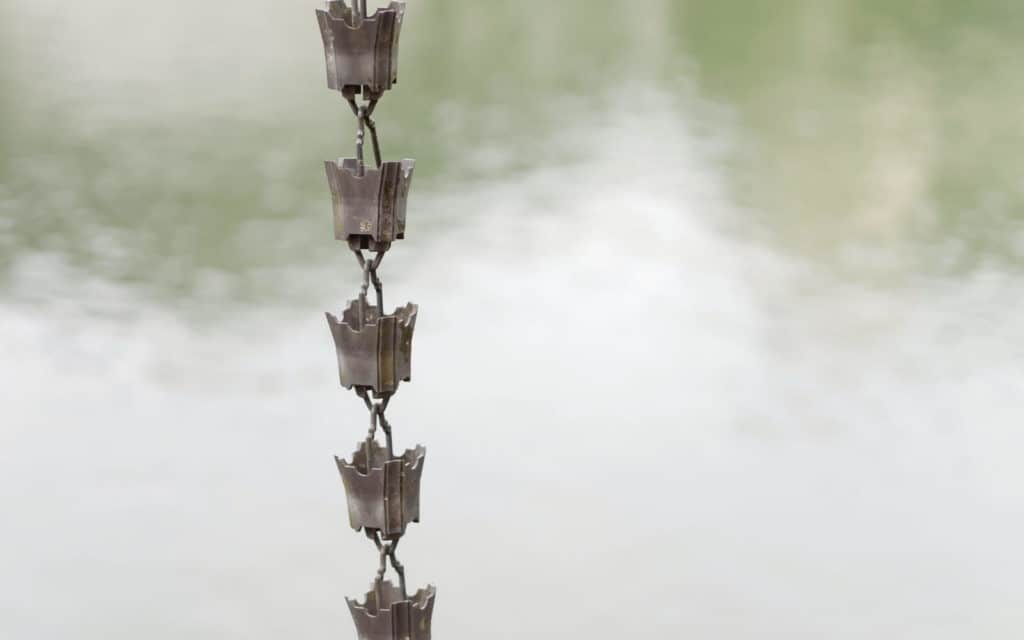
How to make a rain chain?
Making your DIY rain chain isn’t hard. You need some basic materials such as chain links, metal wires, cups, and decorative pieces that you want to include in the chain. In the market, most chains are made of copper that is lightweight and last long.
The first thing you need is some metal wire that is long enough for the chain and strong enough for the weight of water that it will be carrying. You can use anything from old wire hangers to metal coat hangers or even electrical wire. Some people even use recycled materials such as plastic boxes to make eco-friendly rain chains.
When selecting material, pick one that won’t require regular maintenance and last long such as a copper rain chain. After installing over a traditional downspout, check it’s working properly by inspecting the area for proper drainage.
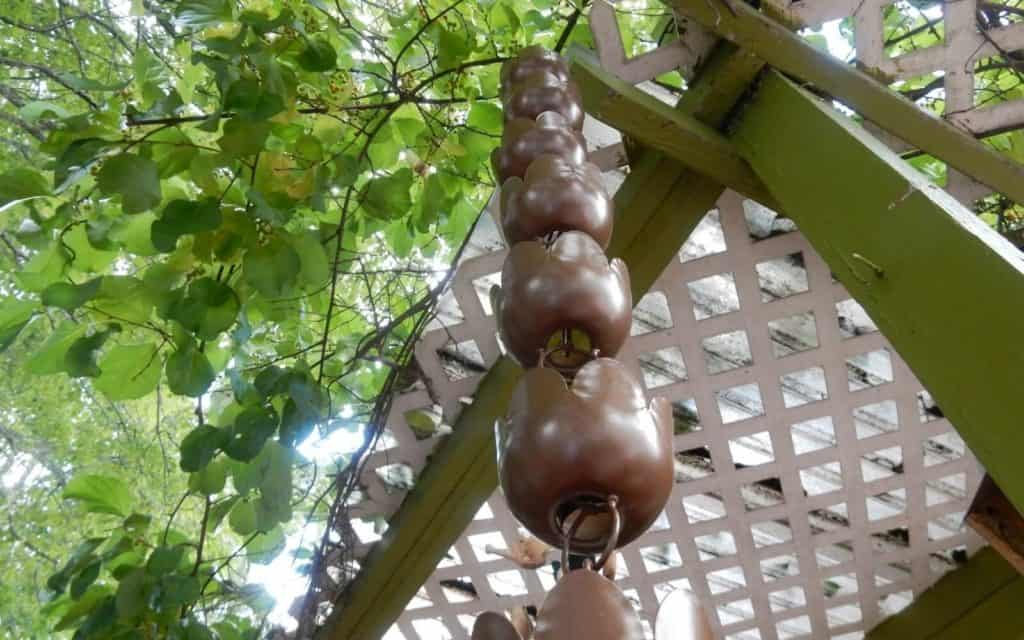
How to install a rain chain without a gutter?
We often picture metal chains hanging from homes’ eaves when we think of rain chains. But gutter less rain chains are easy to install. To start rain chain installation, you need to disconnect the downspout. You may need a ladder to reach the roof and a screwdriver to remove the screws.
If you’re ordering rain chains through retailers, most include the needed installation accessory. You need to attach the rain chain to the wall with screws and a bracket, or if it’s too high up, you can use wire and hooks.
Ensure that there are no obstructions in the way of where you want your rain chain to hang, such as air conditioners or vents. To prevent water splashing, you will want to maintain at least 3 feet of space from any obstruction.
Place an anchoring dish or decorative basin at the bottom to let the chain hang to the ground. This prevents swinging during windy days and helps catch the water flowing down.
If you plan to use a rain barrel to store water, ensure the chain goes a few inches inside the rain barrel to prevent any swing and direct water flow straight into the barrel.
After the installation, you can check how well it’s working by spraying water to your roof through a soaker hose for 10 to 15 minutes and check how well the rain chain is functioning.
For a sloped root, water will flow naturally more in the downward direction, and you can shift the rain chain in that area to prevent water pooling.
Where to hang the rain chain?
You can hang rain chains at the current location of downspouts or around the roof where the water flows naturally. There is no restriction for most homes where you should hang it, but you shouldn’t turn them in direct sunlight or too close to trees because it will make them dirty and cause moss to grow.
Another best place to hang a rain chain is on an outdoor or terrace garden. If you’re using a greenhouse, you can install it inside and divert the water flow to a rain barrel that you can then use to irrigate plants.
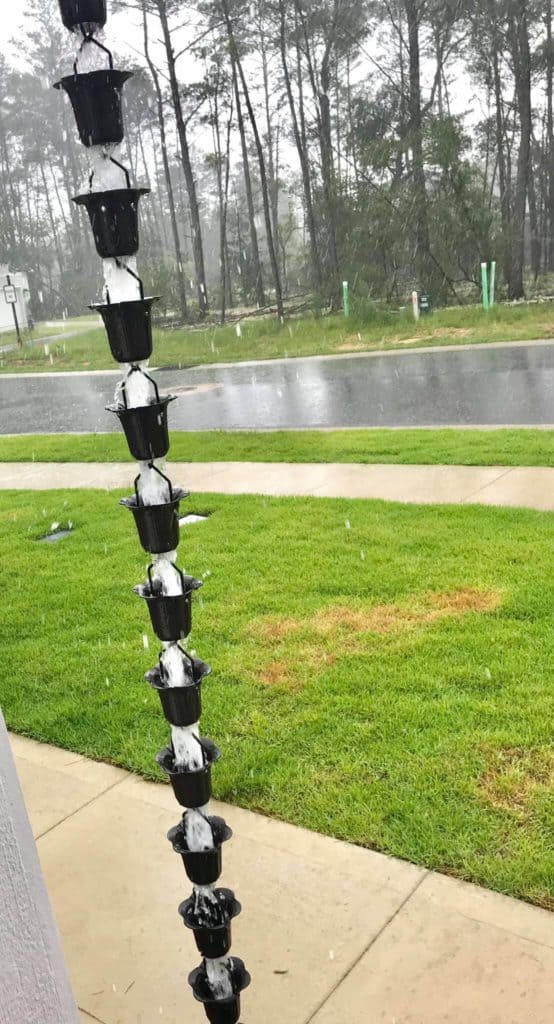
How long should the rain chain be?
There is no standard length for rain chains, but there are some guidelines you can follow to make sure you get one that is just right. A rain chain should be at least 8 feet long to hang it low enough for water to collect in the container below.
The rain chain should also be made of metal to withstand outside elements such as the sun and wind. This helps improve your home’s curb appeal, add character, reduce noise, and add balance to your landscape.
Where to buy rain chains?
Several hardware stores such as Home Depot, Walmart, and Lowes sell rain chains. But often, there are limited selections to choose from, and some only sell it as a seasonal item which means there is limited availability.
The best option is to order it online on Amazon or Etsy, where they have several selections and fast shipping options. But before you decide to choose and order one, you should go through reviews and testimonials before making a purchase decision.
What next
Rain chains are a beautiful and practical way to collect rainwater. They prevent water from dripping on the ground while adding a decorative touch to your home. If you’re looking for a way to add some style to your home while also collecting rainwater, then a rain chain is the perfect solution.
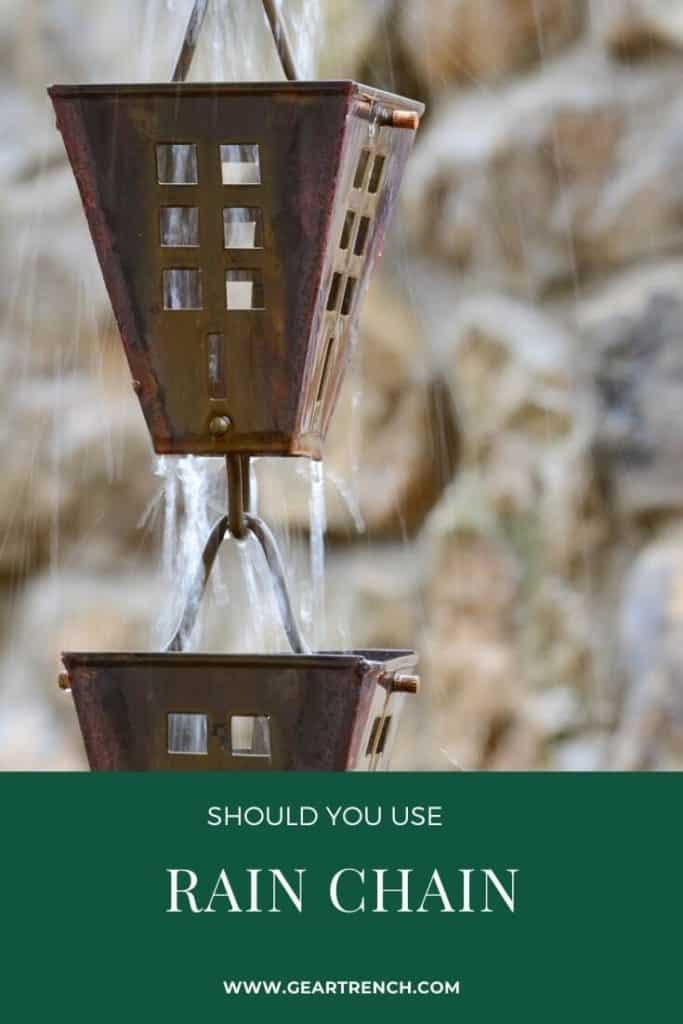
Don’t forget to share this post

